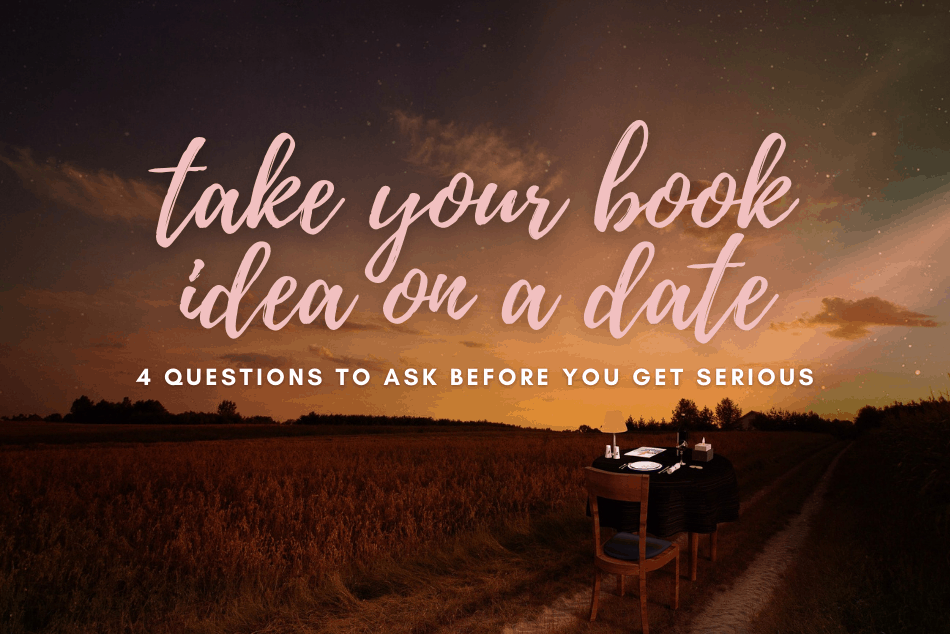by Erin Celello
If you’re like a lot of people right now, you’ve resolved to make this the year you finally get that book written. And before we go much further, in the words of David from “Schitt’s Creek”: “I feel like that needs to be celebrated.” Go, you!
Hold up for a second, though. We have to talk about some things first. Four things, to be exact.
Because the key to writing a book is to first not write it.
Say what?
The key to writing a book is to first write about it, delving into the how and why of your premise.
I know what you might be thinking: that you have to get all of this out of your head and down on paper now, before you forget some essential element. Or that writing about your book is going to take all the magic out of it—the story will come together once you get going.
I get it. I’ve felt the same way. Some people love pre-writing: compiling timelines and planning and research, doing character deep dives and questionaries, vision boarding the setting… I am not one of those people. And while this type of planning has its place, in my experience as both an author and a writing mentor, it isn’t particularly useful for really getting to know your story in a way that’s going to help you stay on track from beginning to middle to end.
It’s like dating someone and putting all of your effort into finding out what their favorite color is, or what size shoe they wear—details that have no bearing on whether you’re a good fit together—instead of asking them significant, deal-breaker questions about their future goals, if they want children, or where they envision themselves living.
One of the first questions I ask the writers I mentor through The 5th Semester residencies is, simply: Tell me about your project. With these five little words, it quickly becomes obvious that many writers know what happens in their book but can’t articulate the central conflict and question around which it revolves. Why? Because that’s a harder question, and often one they have yet to unearth.
So, our mentoring faculty did two things: We bought an egg timer and we developed a set of four simple pre-writing questions we’ve come to call, “Take Your Idea on a Date,” designed to help you get to know your book in all the right ways.
Question #1: What’s the first time you thought, “Ah-ha! There might be a book here?”
Story ideas often feel like being struck by lightning, or suddenly seeing the world in color when it was previously black and white. It’s such an exciting, euphoric feeling that writers charge ahead, exploring what-ifs exploding like fireworks in their mind’s sky. Focusing on that moment of inception, that first twinge of “ah-ha,” allows you to slow down and really consider what it is that’s drawn you to your idea, to understand how it came to be.
Take a moment and think back—what was the first time this idea occurred to you? Where were you? What were you thinking about? What was the point where you first thought, Yes… a book!
And, perhaps most important, what is your idea? That’s right. You still need to answer that question. Holding a wispy, ethereal idea in your head is a lot different than committing it to words, in black and white.
Question #2: Why do you care?
Why does this idea, this story, speak to you? Most writers have themes or motifs that interest them, that they keep returning to, book after book. For example, many of Alice Munro’s stories tend to center around memory, or its fallibility. Celeste Ng gravitates toward the fault lines of class and race on a micro level of neighborhood, or even within a family.
Exploring your why will help you tap into what it is you’re interested in as a writer. Furthermore, it will help you stay true to your idea when you pass through the dreaded swampy middle.
Question #3: Why will someone else care?
This is your reader’s why, the yin the above question’s yang. You have to make sure to get the buy-in of your readers, to be able to articulate the “So what?” question that your book will try to answer.
Have you ever been through an ordeal and had people say, “You need to turn this into a book!”—which you quickly find you have no interest in doing? Often this is because we know that there’s no larger theme or message that would make someone who doesn’t know us care about the play-by-play.
Too many writers mistake a good plot for a good story. To prevent this, you have to start out knowing what it is you want your reader’s takeaway to be, what the one thing is that you want them to realize after they turn the last page.
Put another way, what is the driving idea your book is spending every paragraph, every chapter trying to explore or explain? All successful books have one, with varying degrees of complexity. Knowing this upfront functions as a sort of mission statement or a compass, always showing you where your story’s true north is.
Question #4: What is the key scene when you imagine this story?
My second novel, Learning to Stay, is about Elise, the wife of an Iraq War veteran who has to decide, when he returns home, what to do when you’ve pledged your life to one person who has becomes someone very different. Before I started writing, I knew my why and my reader’s why, and I knew where the idea for the book had come from. But I had no idea where to start the book. And frankly, I wasn’t sure where it was going to end up. To make matters worse, I was on a serious deadline.
But I did have this one scene of the protagonist’s husband, curled up on the floor of a garage with a mangy dog he’s rescued while Elise waits for him in bed. It wouldn’t let me go. And from that one image, I could work both backward and forward to create my book. Because when the dog pops up, the dog sort of rescues Brad right back—something his wife has been trying unsuccessfully to do. That scene wasn’t just random—it actually contained the very central choice of my book.
Identify that one scene that won’t let you go, the one you keep returning to in your mind.
Don’t worry where it falls in your book. Don’t worry if you can’t see anyone in it, if you don’t know that person’s name, or if you don’t know exactly where it is. Just channel it. Write everything that you see in your mind’s eye. And then write about what you think it might mean.
Four simple questions. That’s it! That’s pre-writing anyone can do.
Taking the time to answer these questions now will help you avoid time-sucking tangents later on, as well as stave off writer’s block. Even if you’ve already started work on your manuscript, they’ll still provide useful guidance or guardrails for the remainder of your drafting or revision.
What tried-and-true prewriting prompts have you used? We’d love to hear about them on the Career Authors Facebook page!
 Erin Celello is the author of two novels, Miracle Beach and Learning to Stay (Penguin/NAL), and along with novelist Ann Wertz Garvin runs The 5th Semester, a book development program designed to help anyone take their project from inspiration to publication. Celello is also a tenured professor for the University of Wisconsin–Whitewater’s creative writing program and Drexel University’s MFA program. Visit her online at ErinCelello.com.
Erin Celello is the author of two novels, Miracle Beach and Learning to Stay (Penguin/NAL), and along with novelist Ann Wertz Garvin runs The 5th Semester, a book development program designed to help anyone take their project from inspiration to publication. Celello is also a tenured professor for the University of Wisconsin–Whitewater’s creative writing program and Drexel University’s MFA program. Visit her online at ErinCelello.com.





